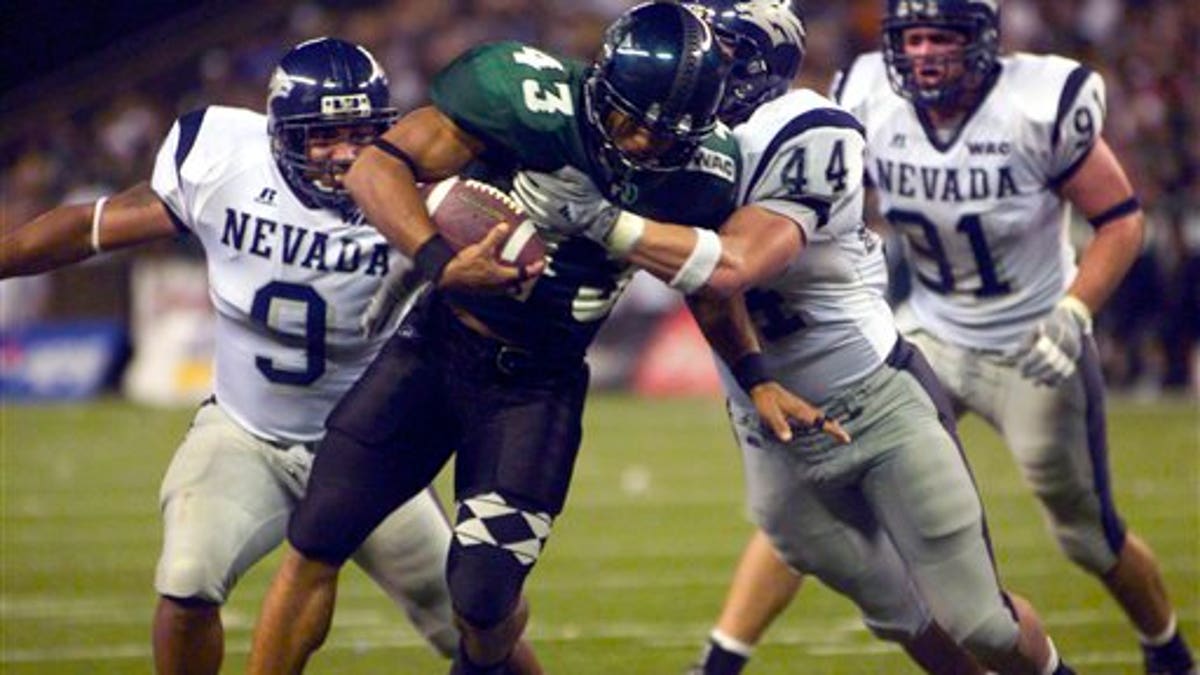
With uneven testing for steroids and inconsistent punishment, college football players are packing on significant weight without drawing much attention from their schools. (AP)
College football players are packing on the pounds without drawing much attention from their schools or the NCAA in as sport that earns over a billion dollars for teams.
Rules vary so widely that, on any given game day, a team with a strict no-steroid policy can face a team whose players have repeatedly tested positive.
The Associated Press announced that–based on dozens of interviews with players, testers, dealers and experts, as well as an analysis of weight records for more than 61,000 players–the sport’s near-zero rate of positive steroids test isn’t an accurate gauge among college athletes.
Random tests provide weak deterrence and, by design, fail to catch every player using steroids. Colleges are also reluctant to spend money on expensive steroid testing when cheaper ones for drugs like marijuana allow them to say they’re doing everything they can to keep drugs out of football.
"It's nothing like what's going on in reality," said Don Catlin, an anti-doping pioneer who spent years conducting the NCAA's laboratory tests at UCLA.
Catlin said the collegiate system, in which players often are notified days before a test and many schools don't even test for steroids, is designed to not catch dopers. That artificially reduces the numbers of positive tests and keeps schools safe from embarrassing drug scandals.
For decades, scientific studies have shown that anabolic steroid use leads to an increase in body weight. Weight gain alone doesn't prove steroid use, but very rapid weight gain is one factor that would be deemed suspicious, said Kathy Turpin, senior director of sport drug testing for the National Center for Drug Free Sport, which conducts tests for the NCAA and more than 300 schools.
Yet the NCAA has never studied weight gain or considered it in regard to its steroid testing policies, said Mary Wilfert, the NCAA's associate director of health and safety. She would not speculate on the cause of such rapid weight gain.
The NCAA attributes the decline in positive tests to its year-round drug testing program, combined with anti-drug education and testing conducted by schools.
"The effort has been increasing, and we believe it has driven down use," Wilfert said.
The AP's analysis found that, regardless of school, conference and won-loss record, many players gained weight at exceptional rates compared with their fellow athletes. The documented weight gains could not be explained by the amount of money schools spent on weight rooms, trainers and other football expenses.
Adding more than 20 or 25 pounds of lean muscle in a year is nearly impossible through diet and exercise alone, said Dan Benardot, director of the Laboratory for Elite Athlete Performance at Georgia State University.
The AP found more than 4,700 players gained more than 20 pounds overall in a single year. It was common for the athletes to gain 10, 15 and up to 20 pounds in their first year under a rigorous regimen of weightlifting and diet. Others gained 25, 35 and 40 pounds in a season. In roughly 100 cases, players packed on as much 80 pounds in a single year.
In at least 11 instances, players that AP identified as packing on significant weight in college went on to fail NFL drug tests. But pro football's confidentiality rules make it impossible to know for certain which drugs were used and how many others failed tests that never became public.
What is bubbling under the surface in college football, which helps elite athletes gain unusual amounts of weight? Without access to detailed information about each player's body composition, drug testing and workout regimen, which schools do not release, it's impossible to say with certainty what's behind the trend.
But Catlin has little doubt: It is steroids.
"It's not brain surgery to figure out what's going on," he said. "To me, it's very clear."
Based on reporting by the Associated Press.
Follow us on twitter.com/foxnewslatino
Like us at facebook.com/foxnewslatino
